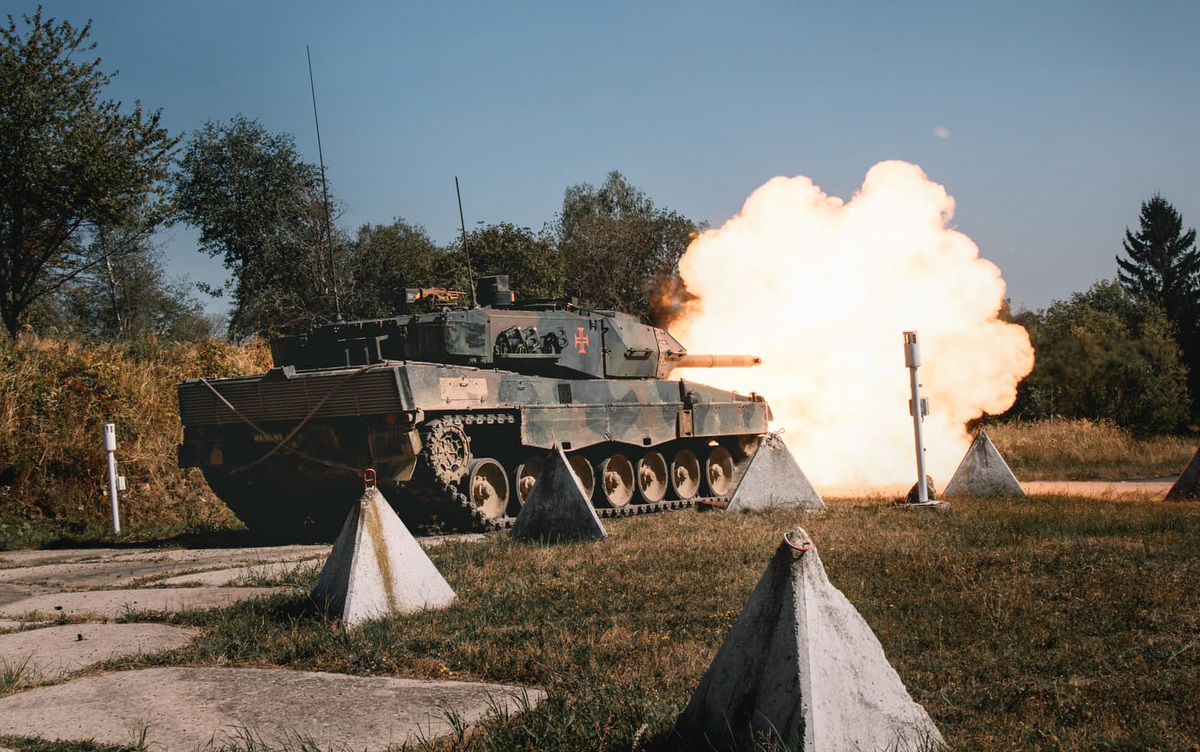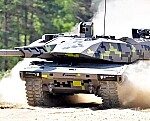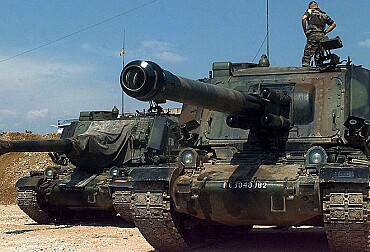Portuguese Leopards, Spanish Centauros and Cervus anti-drone system in Slovakia
Spanish soldiers operating the B1 Centauro wheeled Fire Support Vehicles and Cervus anti-drone systems, along with Portuguese forces operating the Leopard 2A6 Main Battle Tanks, are actively participating in an exercise in Slovakia. This is part of the NATO Multinational Brigade Task Force in Slovakia. The core mission of NATO Battlegroups on the Alliance's Eastern Flank is to demonstrate the Alliance's collective ability to address security threats and defend Allied nations, including Slovakia and its citizens, should the security situation deteriorate.

Spain officially took command of the NATO Multinational Battlegroup Slovakia (NATO MN BG SVK) from the Czech Republic at the Military Training Centre (MTC) Lešť on 1 July 2024. Simultaneously, the Spanish Contingent (ESPCON) assumed a leading role in expanding the multinational battalion-sized task force into a Combat Brigade. During the HOTO ceremony, Slovak Minister of Defence Robert Kaliňák remarked: "I am convinced that the wide array of capabilities that the Spanish Armed Forces bring will benefit the entire transformation of the Battlegroup and will be of help not only to us but also to the multinational Combat Brigade as a whole." These capabilities include command and control (C2), manoeuvre, combat support (CS), and combat service support (CSS), including engineering and logistics assets.
Alongside the Portuguese, Spanish soldiers have been in Slovakia for an extended period as part of the Battlegroup. Together with their Slovak, Czech, and Slovenian counterparts, they continually train in various operations, demonstrating the equipment they can deploy from Western Europe to NATO’s eastern border. This includes the Portuguese Leopard 2A6 Main Battle Tanks and the Spanish B1 Centauro wheeled Fire Support Vehicles. These exercises showcase, among other things, their mobility and firepower.
This presence of NATO member countries in the region is part of a broader policy to reinforce NATO's eastern flank. It not only enhances the soldiers' capabilities but also facilitates the exchange of experiences between hosting nations and those deployed. This cooperation promotes greater collaboration between countries and offers an opportunity to showcase military equipment and tactical methods.
The B1 Centauro, a Wheeled "Tank"
The B1 Centauro is an Italian wheeled tank destroyer/fire support vehicle designed and manufactured by a consortium of Italian companies—IVECO (hull) and Oto Melara (turret)—for the Italian Army. It was intended as a light, highly mobile, and heavily armed fire support vehicle capable of complementing the C1 Ariete Main Battle Tanks in Italian Army units that operate wheeled vehicles. Its armament includes the Oto Melara 105mm rifled cannon with a 52-calibre long barrel. The vehicle carries 40 rounds. A Beretta MG 42/59 7.62 mm machine gun is paired with the main weapon, and two additional machine guns can be mounted on the turret for defense against aircraft, infantry, and light armored threats.
The armour of the base version provides ballistic protection against 20 mm calibre ammunition on the front half-sphere and 12.7 mm calibre ammunition on the sides and rear. The vehicle is powered by a 520 hp diesel engine, which allows it to reach a top speed of 105 km/h on roads, with a range of 800 km. Under international disarmament agreements, the Centauro is treated as a tank due to its parameters, although in practice it functions as a fire support/tank destroyer vehicle. It is currently used by the armies of Italy (259 units, some of which are being replaced by the newer Centauro 2 vehicles with 120mm cannons), Jordan (141 units), Spain (84 vehicles), and Oman (9 units, 120mm cannon version).
The Cervus Anti-Drone System
The Cervus is designed to protect critical installations from potential drone attacks. The latest version, the Cervus III, integrates a command and control system that, through artificial intelligence, combines data from various sensors: radars, cameras, radio frequency antennas, and a jammer. It also includes a Guardian remote-controlled turret equipped with a 12.7 mm machine gun, providing direct neutralization capabilities. The system is controlled by an operator via a simple interface, enabling efficient sensor management and real-time decision-making. "The Cervus III uses artificial intelligence and machine learning to enhance precision in detecting and neutralizing enemy drones. These technologies enable the system to operate with minimal human intervention, optimizing speed and effectiveness in decision-making," states TRC, the Spanish company that developed the system.
The system is mounted on two vehicles. The VAMTAC S3 carries a 3D radar, developed by the Spanish company ART, with a detection range of up to 10 kilometers. The command and control vehicle, the VAMTAC ST5 BN3, is equipped with two masts: one with the Oteos electro-optical system (with a range of up to 20 kilometers, developed by Escribano Mechanical & Engineering), and the other with signal inhibitors that disable drones.
The Leopard 2A6
The Leopard 2A6 is a German Main Battle Tank, an upgraded version of the Leopard 2, developed as a successor to the 2A5 model. It features a longer barrel and enhanced mine protection. The vehicle’s main armament is the Rheinmetall 120mm L/55 smoothbore cannon, which replaced the previous design with a barrel length of 44 calibres. This modification increases the projectile velocity, significantly improving armor penetration. The tank carries 42 rounds stored in the hull and turret. A 7.62mm MG3 machine gun is coupled with the cannon, and an additional one is mounted on the turret.
The Leopard 2A6 is powered by a 12-cylinder MTU MB 873 Ka-501 diesel engine rated at 1,500 hp, paired with a Renk HSWL 354 transmission. The tank can accelerate to 68 km/h in forward gear and up to 31 km/h in reverse. Weighing 62 tonnes, this version of the Leopard 2 is used by the armies of Germany, Ukraine, Canada, Spain, Finland, Greece, and Portugal.








